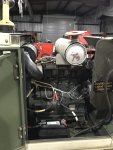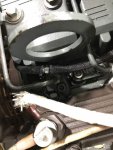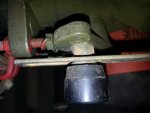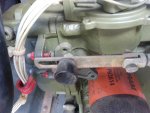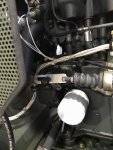tscott8201
New member
- 33
- 0
- 0
- Location
- Keystone Heights, Fl.
Won an auction on an MEP803a and brought it home 2 weeks ago. The kids had the weekend off baseball so I finally got a chance to pull it into the shop and give it a good solid inspection. I found the diesel tank 3/4 full of nice clean diesel fuel, a brand new air cleaner, Perfect oil in the crank case and what appears to be a brand new oil filter and fuel filter which is all good.
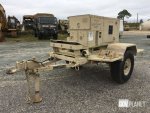
Now for the bad, I found a number of sensor wires and alternator wires cut clean in an attempt, I assume, to render it inoperable before sending it to the surplus yard. I also found the turn in paper work for the final service which notes a "class 3 fuel leak at the injectors". I also found the stop solenoid link bar is missing so the only way to stop the unit is to turn the stop lever by hand and the unit had no batteries. A shot of the missing stop solenoid linkage is below.
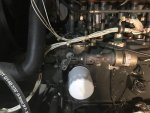
After refilling the radiator putting a new pair of batteries in it and double checking all the fluids and filters I decided to give it a try. The little diesel fired right up and idles effortlessly. After letting it warm up a bit I adjusted the idle to bring it up to 60Hz and that's when the fuel leak showed back up. I had hoped the paperwork I found was the documentation of the repair but alas, I do indeed have a fuel leak somewhere on top of the engine. My prime suspect is the black braided return line on top of the engine but before I could pull lid off the box, it was getting late and I had to call it a night. I used my phone to take a few shots of the top of the engine to see if I could spot the failure but it's not an obvious problem from the photos.
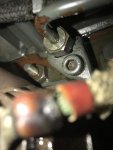
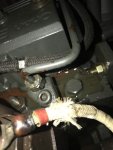
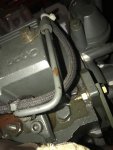
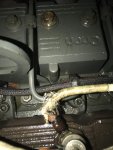
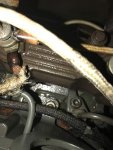
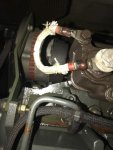
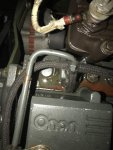
So the plan for the tonight is to get the lid off the box, fire up the generator again, and track down that fuel leak. I found the post on here documenting which aftermarket hose is a direct replacement for the existing return line, so I'm good if that's the problem. I also need to track down the parts for the link bar that is missing. The solenoid works but without the link bar to stop it, it just shoots the plunger out when it's disengaged. Where do you all generally get your parts for these units? Ebay? What else might be the cause of my fuel leak? Any information would be greatly appreciated.
Tom

Now for the bad, I found a number of sensor wires and alternator wires cut clean in an attempt, I assume, to render it inoperable before sending it to the surplus yard. I also found the turn in paper work for the final service which notes a "class 3 fuel leak at the injectors". I also found the stop solenoid link bar is missing so the only way to stop the unit is to turn the stop lever by hand and the unit had no batteries. A shot of the missing stop solenoid linkage is below.

After refilling the radiator putting a new pair of batteries in it and double checking all the fluids and filters I decided to give it a try. The little diesel fired right up and idles effortlessly. After letting it warm up a bit I adjusted the idle to bring it up to 60Hz and that's when the fuel leak showed back up. I had hoped the paperwork I found was the documentation of the repair but alas, I do indeed have a fuel leak somewhere on top of the engine. My prime suspect is the black braided return line on top of the engine but before I could pull lid off the box, it was getting late and I had to call it a night. I used my phone to take a few shots of the top of the engine to see if I could spot the failure but it's not an obvious problem from the photos.







So the plan for the tonight is to get the lid off the box, fire up the generator again, and track down that fuel leak. I found the post on here documenting which aftermarket hose is a direct replacement for the existing return line, so I'm good if that's the problem. I also need to track down the parts for the link bar that is missing. The solenoid works but without the link bar to stop it, it just shoots the plunger out when it's disengaged. Where do you all generally get your parts for these units? Ebay? What else might be the cause of my fuel leak? Any information would be greatly appreciated.
Tom



